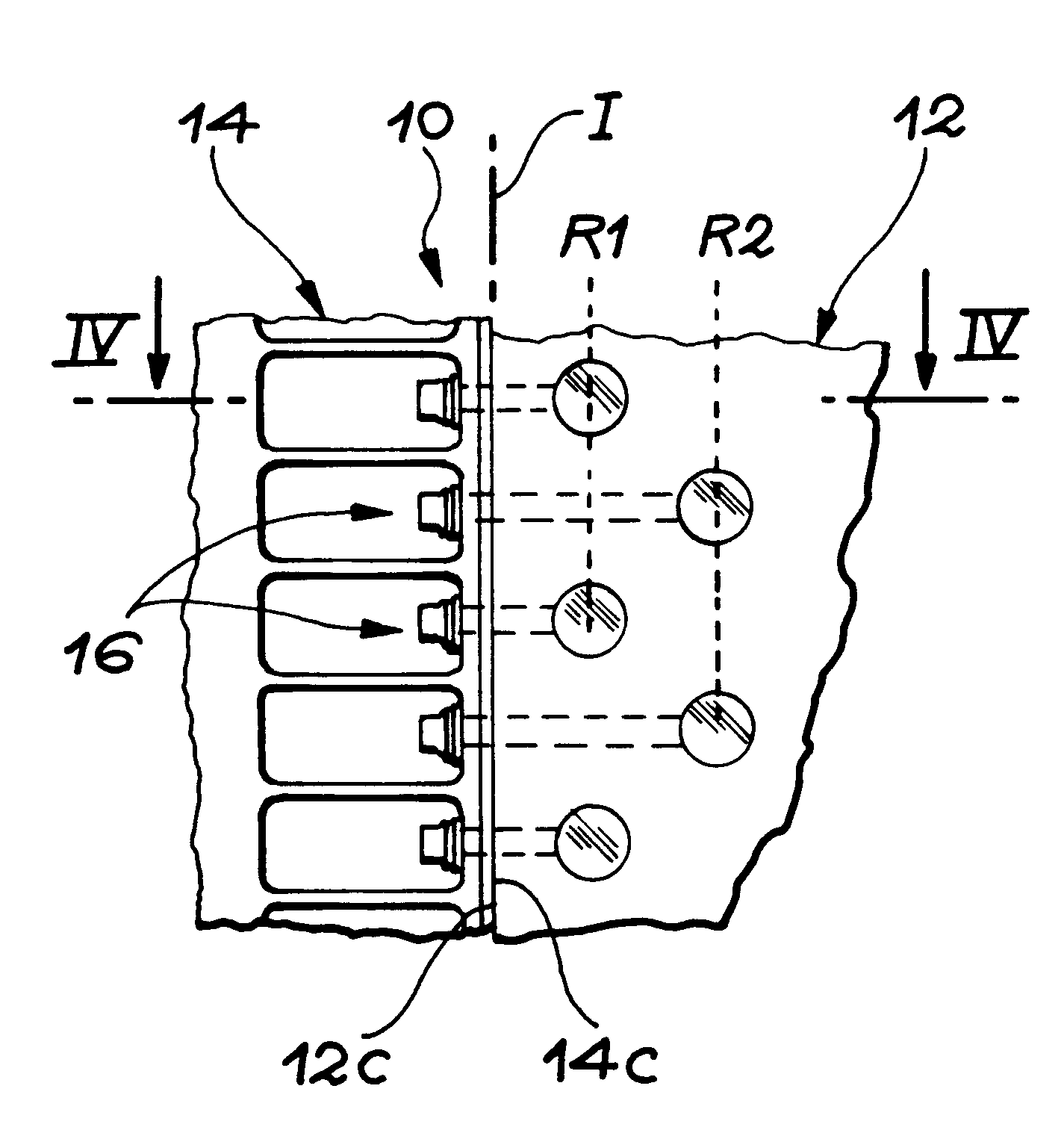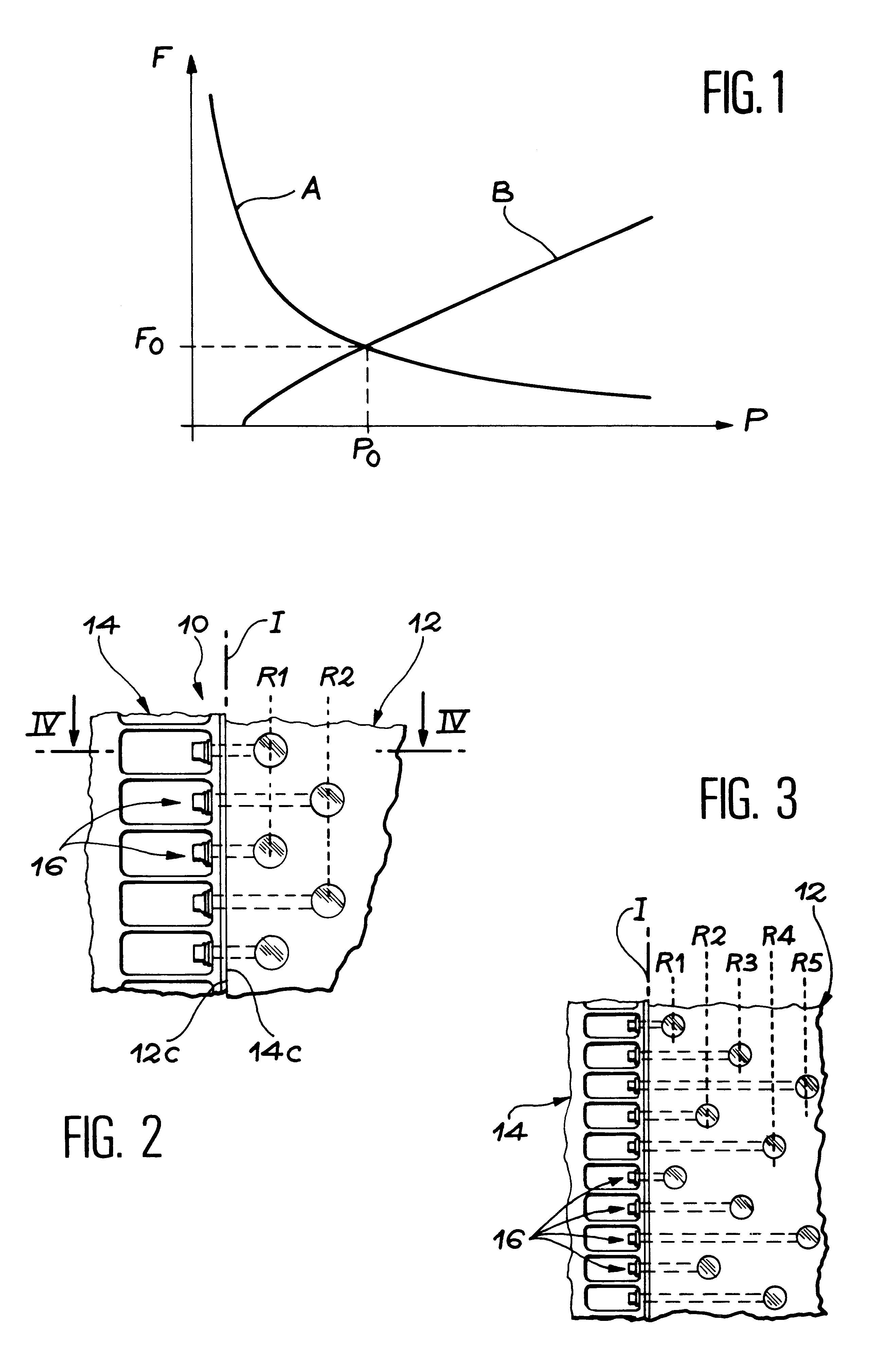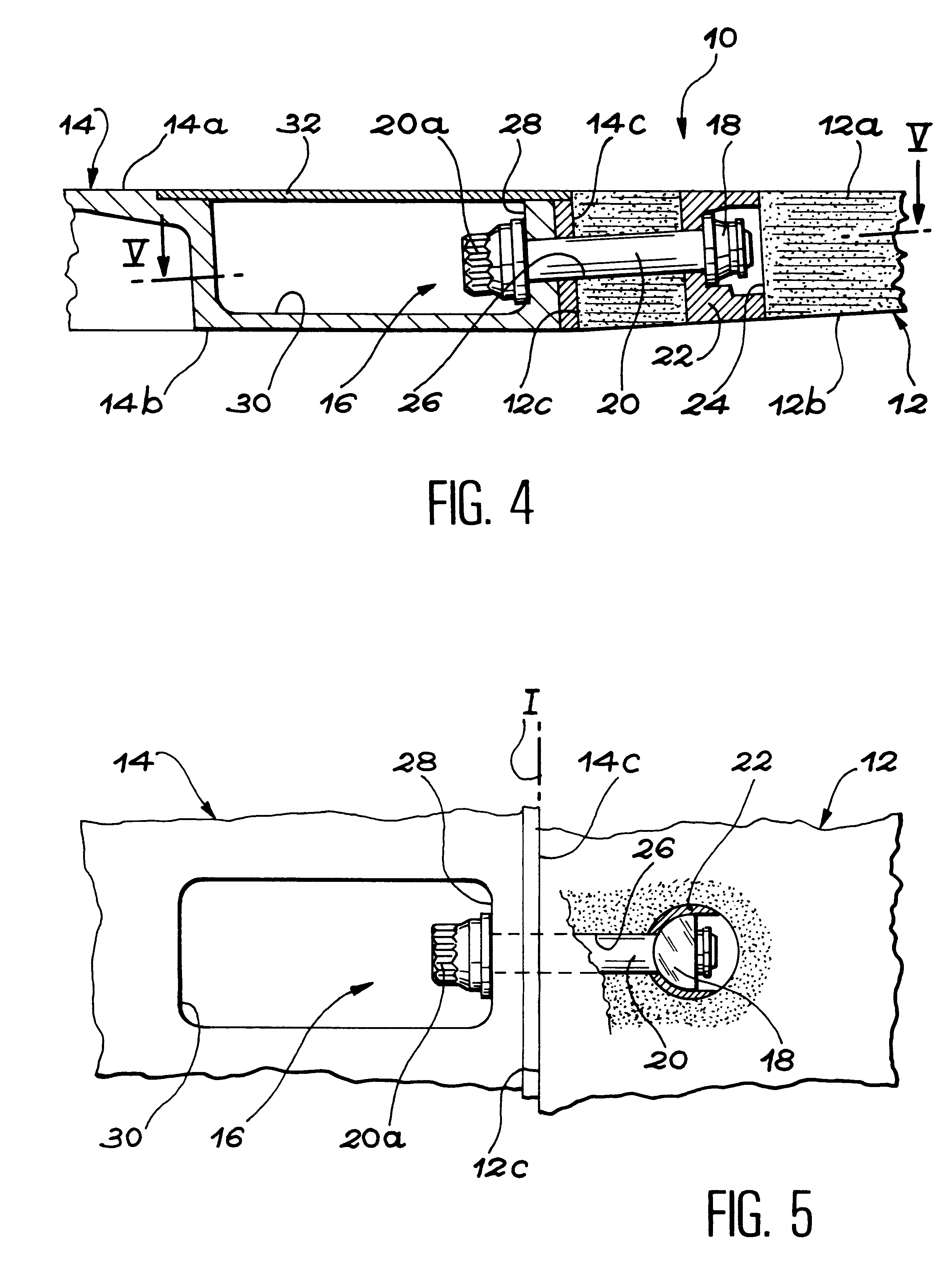Device for joining a panel and a structure, able to transmit significant forces
a technology of significant forces and joints, applied in mechanical devices, couplings, transportation and packaging, etc., can solve the problems of long and difficult implementation of known techniques, difficult installation of joint plates through the inside of wings, and difficulty in applying assembly techniques, so as to preserve the aerodynamic properties of the panels and reduce the phenomenon of delamination of this material
- Summary
- Abstract
- Description
- Claims
- Application Information
AI Technical Summary
Benefits of technology
Problems solved by technology
Method used
Image
Examples
first embodiment
In FIG. 2, a first embodiment has been shown wherein the nuts 18 are arranged along two rows, denoted by the references R1 and R2.
second embodiment
FIG. 3 shows a second embodiment wherein the nuts 18 are arranged along five different rows, denoted by the references R1, R2, R3, R4 and R5.
For a given number of mounts 16, this arrangement in staggered rows of the nuts 18 makes it possible to increase the quantity of material between two holes 24 corresponding to two consecutive mounts. The result is less embrittlement of the panel to tensile and compressive forces. This arrangement therefore makes it possible to reduce the effective pitch of the mounts 16 and to increase proportionally the flux of forces able to be transmitted by the joint device 10.
Like FIG. 1 previously described, FIG. 6 shows an orthonormal frame in which the pitch P (in mm) between two mounts 16 has been shown as the x-coordinates and the flux F (as daN / mm) of the forces transmitted between the panel 12 and the structure 14 has been shown as the y-coordinates.
In FIG. 6 curve A reappears, showing the change in the flux able to be withstood by the tension screw...
third embodiment
variant, the tension screws 20 the nuts of which are arranged in different rows are clamped more tightly when the forces transmitted are smaller, and conversely. Pre-stressing is thus applied to the screws transmitting the smaller forces, in such a way that the forces applied to the joint device are distributed more homogeneously between the different mounts.
Furthermore, it should be noted that the forces able to be transmitted through the joint device according to the invention become larger the greater the distance separating the different rows. Indeed, the result of this is an increase in the quantity of material (and therefore in the sheared cross-section) between the holes 24 of the adjacent mounts 16, which belong to different rows. The effect of this is to delay the rupture of the composite material and to use still more the capacities of the tension screws 20, without appreciably increasing their mass. In the same spirit, an increase in the distance separating the first row ...
PUM
 Login to View More
Login to View More Abstract
Description
Claims
Application Information
 Login to View More
Login to View More - R&D
- Intellectual Property
- Life Sciences
- Materials
- Tech Scout
- Unparalleled Data Quality
- Higher Quality Content
- 60% Fewer Hallucinations
Browse by: Latest US Patents, China's latest patents, Technical Efficacy Thesaurus, Application Domain, Technology Topic, Popular Technical Reports.
© 2025 PatSnap. All rights reserved.Legal|Privacy policy|Modern Slavery Act Transparency Statement|Sitemap|About US| Contact US: help@patsnap.com



